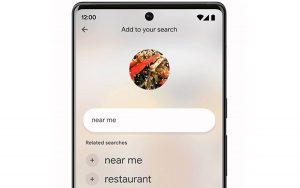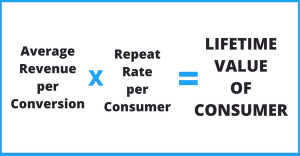What’s a content creation swipe file? It’s a repository of ideas, images and research that will help you map out what to create next. Columnist Quinn Whissen explains why you need one and how to create it.

Let’s start with a story…
You sit down to create a piece of content for your upcoming blog, and you draw a blank. You stare at the blinking cursor of doom, unable to fathom how you’ll come out of this creative void. You sit, minute by minute, waiting for inspiration to strike. Yet all you feel is the thumping of your heart and the slowly forming beads of sweat in your clenched fists. It quickly starts to dawn: You don’t know what to write about, and you have no idea where to start.
Writer’s block. The sad fate of many creatives who struggle to come up with their next idea. But this article isn’t about overcoming writer’s block specifically; there are plenty of those out there.
I’ll also look beyond writing, since we all know the best content marketing results are found with a variety of content formats, including visual, interactive and written.
The truth is that in the world of content marketing, you should never have to experience the racing heart and sweaty palms, because there are strategies to circumvent this from happening.
How?
By creating a robust swipe file that serves as your repository of ideas, topics, titles, images and inspiration, so you always have a trusted source to pull from when creating or assigning your next piece of content.
What Is A Swipe File?
A swipe file is a term that stems from traditional advertising copywriters who would gather title ideas, clippings, research snippets and more into a file that could later inspire their work.
I recommend taking this idea and adopting it as content marketers, since we’re people who undoubtedly need an idea bank at the ready to help us cut through creative barriers and get the work done.
And since we’re now in 2016, there are plenty of ways to create a digital swipe file that’s easily created and accessed at any time.
Some things that could be in your modern-day content marketing swipe file:
- Written articles and blogs.
- Graphics, images or photographs.
- Videos.
- Title and headline ideas.
- Quotes.
- Statistics and research.
- Emails and messages.
Why Is A Swipe File Important?
In teaching content marketing workshops around the country, I end up spending nearly an hour on content ideation because it’s such a common pain point for organizations. In fact, recent research from Content Marketing Institute proves this.
Three of the top six challenges both B2B and B2C content marketers face include:
- Producing engaging content.
- Producing content consistently.
- Producing a variety of content.

While these are all different challenges, they can all be lessened with a robust swipe file that provides a map for content creation, assigns format types during the brainstorming phase and provides a higher chance of creating engaging content with well-researched topics.
Discovering Ideas For Your Swipe File
To create an idea bank, you first need inspiration. Throw out the common understanding that inspiration will strike unpredictably and randomly, like lightning.
Instead, remember that you can find inspiration anywhere at any time, even by searching it out. What you have to do is shift your mindset and expand your awareness to understand that every moment can be a content opportunity.
Here are four places to look for ideas that you may not have considered:
Your Internal Team
The most effective content marketers figure out how to treat their internal resources as assets to their content creation. Do the same thing with your team: Tap them for topic ideas you can drop right into your content piggy bank for a rainy day.
Instruct and train your team to look for content ideas that are born out of common themes in meetings, questions that need answers, internal company shifts or news and website topic gaps that need filling. Set up an email alias like content@yourdomain.com as an easy way for anyone on your team to add to your growing swipe file.
Your Customers
Who better to give you great content ideas than your existing clients or customers? They have insights that cut straight to the heart of your brand, so ask them to provide answers to a few simple questions to help create content that will move your prospects down the funnel:
- What information were you looking for before engaging with a company like ours?
- What answers would have helped you in making a purchasing decision?
- What do you wish we knew after you engaged our company?
- What content could we provide to make you absolutely love us?
Also, fun fact: Your sales team probably has nuggets of gold in their outbox. After all, it’s their daily job to answer questions and overcome objections, so you should be able to find snippets of already-written blog posts in their email and add those, along with your customer insights, to your swipe file.
Your Life
Content inspiration can be found anywhere at any time, even in seemingly random moments in your life. Keep your eyes open for conversations and experiences that reveal lessons that could be applied to your content creation efforts.
I’ve written about the intersection of guacamole and content marketing (Yes, really), and in fact, the idea for this very article came from a discussion I had with Marketing Zen CEO Shama Hyder at a recent conference. We were talking about creating an idea bank, and she threw out the concept of a swipe file, a phrase that I hadn’t heard in awhile.
I commented that being observant and consistently collecting ideas was just an element of being a creative person, and then this article was written to build on that.
Expand your content awareness in your own life, and you’ll be surprised at what comes to you when you least expect it.
Industry Sources
Staying up-to-date on news, trends, predictions and thought leadership within your own industry is the best way to find relevant, timely inspiration for your swipe file. Keep ahead of the curve by staying in touch with industry magazines, blogs, events, conferences and your competitors.
Take it a step further and create custom lists or feeds on your social channels to make discovery as easy as checking and “swiping” 10 minutes every morning.
Tools For Creating A Swipe File
So you have learned to look for content inspiration around every corner, but now what? It’s time to get organized.
Here are some tools I recommend for keeping all of your inspirations straight. Note that your swipe file doesn’t have to live in only one place; some tools are better than others for certain formats, and you may end up using more than one.
Pocket is my go-to article swipe file; I mainly use it for things I want to revisit or utilize in my research. With an easy interface, mobile apps, Chrome integration and simple categorization, this is the ultimate starter tool for anyone looking to remember and revisit something they find worthy of saving.
Plus, your swiped content can be available offline once synced, which comes in handy on long flights or when you just want to unplug your WiFi and focus.

Evernote
Evernote is my messy swipe file. It’s where I snip quotes, put together tons of different topic iterations and scribble thoughts and ideas before they are fully formed.
The tool has way more capability than this, and I know many creatives who live and die by Evernote’s functionality.
Pinterest is not just a place for wedding planning and cupcake recipes, although I’ve done a fair share of pinning on those topics myself.
But for content marketers looking to create a visual idea bank, you can’t really do better than the powerful search functions and customizable boards that this social platform has to offer.
Gather infographics, images, quotes and anything else that visually inspires you or that you think you could use in a future content piece.
Swipe-Worthy
A new tool I found recently is called Swipe-Worthy. Its tagline is “The place for copywriters & marketing minds to dissect & discuss great marketing examples.”
With category niches ranging from DIY to Health and Wellness all the way to Real Estate, this is the ultimate library of content types and marketing ideas. You’ll find emails, pop-ups, banner ads, packaging and more — all providing you with quick inspiration when you need it.
Organizing Your Swipe File For Action
Now that you have ideas for ways to find inspiration and the tools to capture it, you need to take the last and final step towards organizing it all.
By pulling together all your ideas into actual content topics and titles, you will be one step closer to having a swipe file that will take all the stress away from content ideation and funnel easily into your editorial content calendar.
The simplest way to organize your swipe files is with a good ol’ spreadsheet. Take all the raw inspiration you have found and put together a road map that will give you a strong foundation to launch from whenever you’re not sure what to create next.

Make sure to include columns for:
- General topic ideas.
- Title options.
- Format type to give you a quick glance to what topics lend themselves to blogs, videos, graphics and so on.
- Notes that will help you remember what your idea is all about.
- Links to appropriate research.
- Bonus columns: keyword phrase competition, traffic volume and general publication date goal.
Your content marketing swipe file is much more than just brainstorming. It’s the first step on your journey to creating consistently relevant and useful content for your audience.
It all starts with carving out a frictionless process for gathering inspiration, expanding your content awareness and creating habits that will fuel your content marketing success for years to come.
Some opinions expressed in this article may be those of a guest author and not necessarily Marketing Land. Staff authors are listed here.
(Some images used under license from Shutterstock.com.)
Marketing Land – Internet Marketing News, Strategies & Tips
(77)
Report Post







